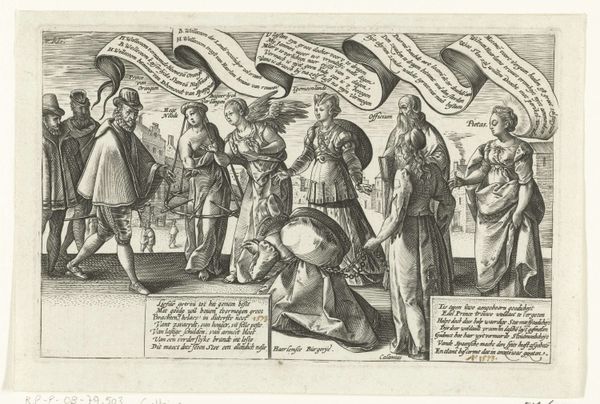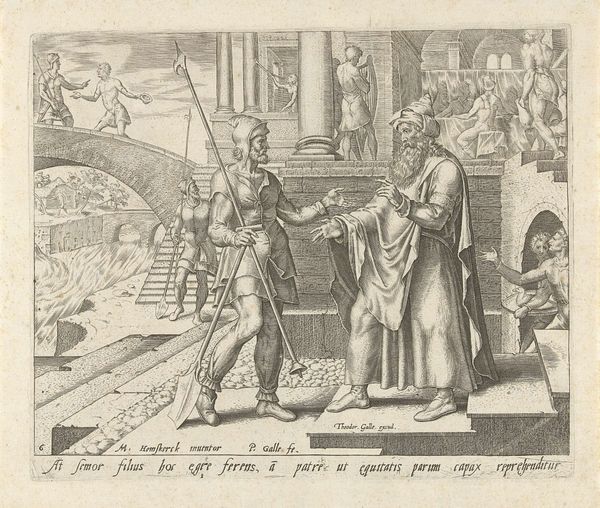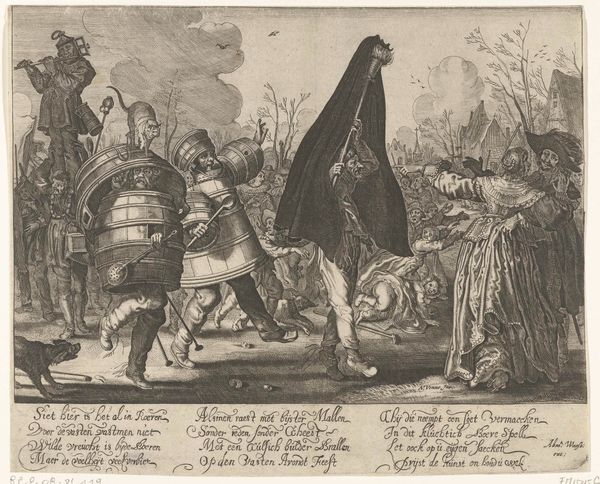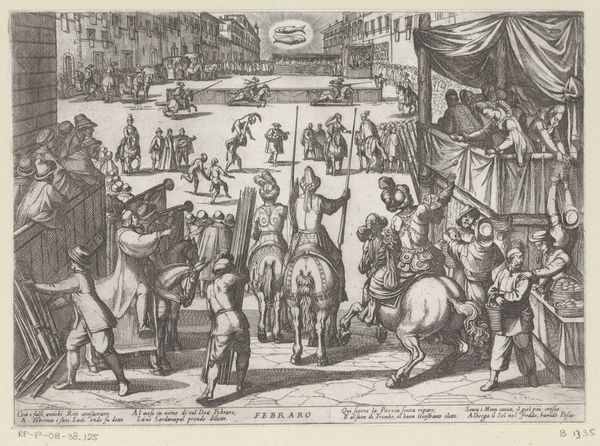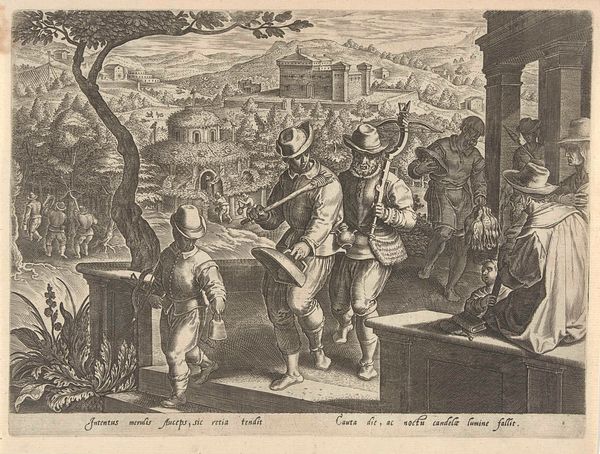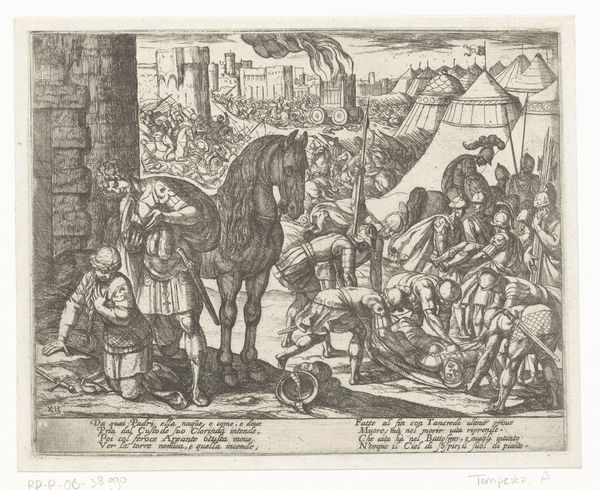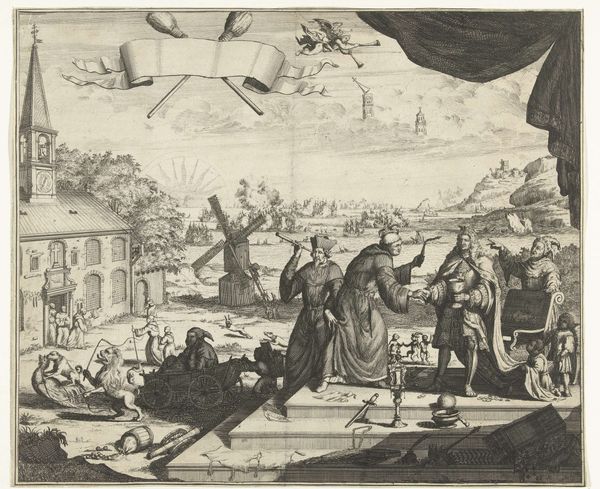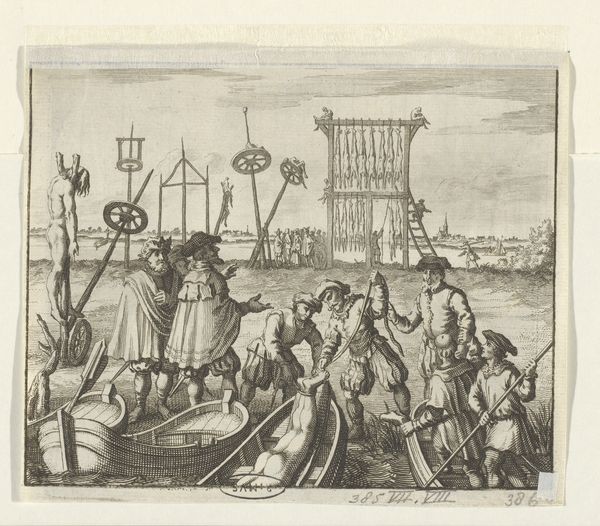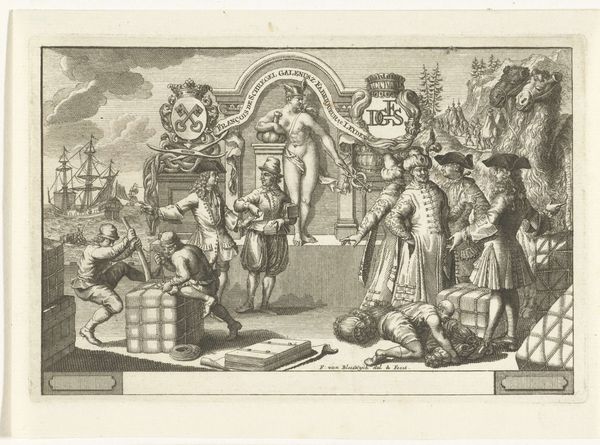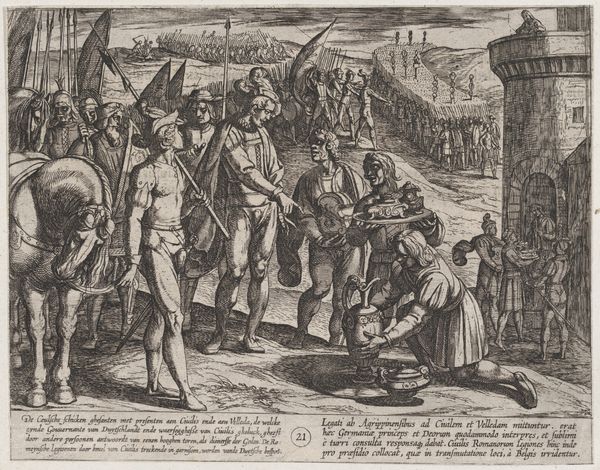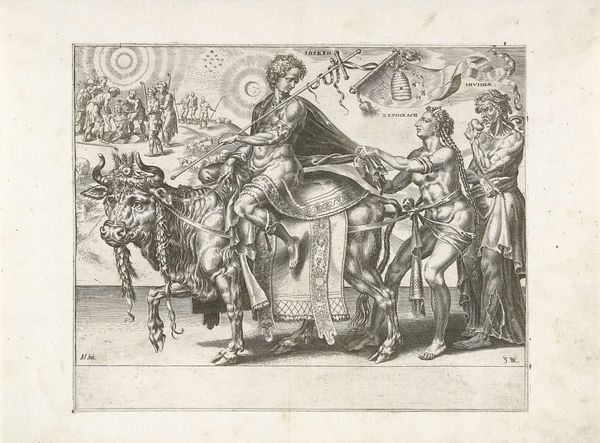
Dimensions: height 230 mm, width 289 mm
Copyright: Rijks Museum: Open Domain
Curator: This engraving at the Rijksmuseum is titled *Allegorie op de Regensburger Amnestie, 1640-1641,* and was created in 1641. Its artist is currently unknown. It’s quite a detailed image. What strikes you most? Editor: Immediately, the sheer busyness! All those tiny figures, each performing some kind of symbolic action. I'm curious about the materiality of this; an engraving means it could be mass-produced. Were these allegorical images common propaganda at the time? Curator: Exactly. The image certainly conveys a complex message related to amnesty, hinting at forgiveness and reconciliation. The cityscapes in the background and figures in the foreground must carry coded meanings. Look at the individuals passing what seem like olive branches towards the regal figures. These recurring themes symbolize peace. Editor: Yes, but note how much weaponry is visible; swords, armour... The engraving highlights peace, but with such tools readily available it could almost read as aggressive! What does it tell us that these figures need so much defense to reach "Concordia," in the background? Curator: Perhaps the artist hints at a guarded peace, bought through power rather than earned by trust. This speaks volumes about their cultural memory of previous discord and need to express these themes through allegory. The contrast between overt power and hopeful harvest imagery is fascinating, isn't it? Editor: Definitely. The materials say just as much. The sharp, definite lines produced by engraving project authority. Then think about how such an image can be duplicated. It allows those who feel wronged by the conflict to project their idea of peace and the true cost to a much wider audience than a painting or tapestry! Curator: It’s amazing to observe how this image captures the intersection of peace and politics during a fractious time. Looking through that lens helps us to grasp not just history, but collective desire. Editor: True. It’s incredible to reflect on the choices—materials, symbolic figures— and think about the anonymous engraver’s own vision of power, material culture, and its influence during conflict and reconciliation.
Comments
No comments
Be the first to comment and join the conversation on the ultimate creative platform.
